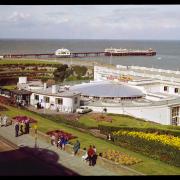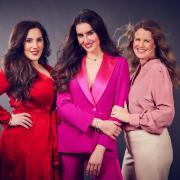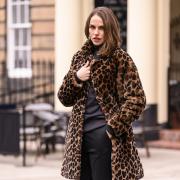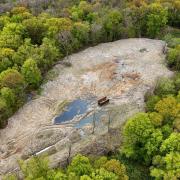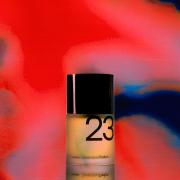If you see a woman at Rochester railway station carrying a very large travel bag, don’t ask her where she’s going for her holiday. For although Sarah Wilkinson enjoys a break as much as the next person (when we talk, she’s looking forward to a long weekend with her husband in the Sussex town of Arundel), that bag will actually be full of garments she’s created for other people, and to the very highest quality. Sarah will be heading with it to bespoke firm Dege & Skinner, founded in 1865 and based in London’s Savile Row, the world-renowned epicentre of tailoring. She herself works for the company as a tailor, mostly home-based but in Savile Row at least once a week. And though such a job and with a company like Dege & Skinner would be the pinnacle of a career for many garment-makers, in fact Sarah, now in her 50s, has worked for the firm since she was 16 – something that says much for the loyalty, skill and job satisfaction experienced by both employer and employee.
A Rochester Grammar School girl, Sarah went against the grain in her determination to pursue a non-academic passion: it was needlework that she loved, the precision, creativity and craftsmanship of it. ‘I had a brilliant teacher, Mrs Wilson, who really encouraged me – but studying tailoring at college wasn’t really on the cards financially, which made an apprenticeship the best option.’

Sarah’s father worked in London and came home with a copy of telephone directory The Yellow Pages. ‘I simply wrote to every London tailor in the book, and eventually someone passed on my name to Dege & Skinner, where I’ve worked ever since. I had some work experience with them and must have done something right because they then offered me an apprenticeship.’
Sarah began learning the craft of tailoring civilian menswear, commuting from home to the capital, but then an unexpected opportunity came up. She explains, ‘Whenever Dege & Skinner had bespoke naval tailoring to be done, they’d have to send garments to specialist military tailor Moseley & Pounsford, based in Portsmouth. Dege & Skinner realised they needed someone back in London who was capable of doing the naval lacing [the adding of the highly specific braids and trimmings to naval jackets and suits], which was where I came in.’

Sarah found herself, aged just 16, ‘literary living above the shop, and on my own – it seems incredible looking back on it’, all while she learned the basics of military tailoring. Outside work, Portsmouth was an exciting place to be: ‘It was just after the Falklands War and I remember the aircraft carriers returning to Portsmouth Harbour – that was quite something.‘
Sarah’s apprenticeship lasted five years and saw her not only living away from home, but returning to the Savile Row workshop under the mentorship of tailor Paul Mathews, who continued to teach her about military tailoring. She also attended classes in menswear cutting and tailoring at the prestigious London College of Fashion. ‘It was the college I’d wanted to go to when I left school but hadn’t been able to afford, so it worked out perfectly that I could go as part of my apprenticeship.’

Among the many highlights of the long career that followed have been tailoring outfits for The King's Body Guard of the Yeomen of the Guard (‘made from an incredibly heavy wool, designed to last several lifetimes, with uniforms specifically designed for Lady Yeomen now, too,’) to creating the frockcoats worn by Prince Harry and his four page boys when he married Meghan Markle in 2018. She’s also helped create a replica of a World War 2 US army uniform that actress Kate Winslet wears in the biopic (currently due to be released this September) about American photographer Lee Miller, Lee. Understandably, though, among all her achievements, it’s the King’s Coronation in 2023 that really stands out for Sarah. ‘Some robes and outfits had been made well in advance,’ she says, ‘and I modified the one that Prince William wore, for example. Often, with ceremonial wear, clients will ask for references to things that are special to them, regiments that they’ve been involved with, perhaps - and we have plenty of time to get all the details right.’

For the younger attendants’ outfits, however – including Prince Louis’ doeskin tunic (with doeskin - Bambi fans please note - actually made from softest Merino wool) the Dege & Skinner team had only a few weeks’ notice. ‘There were last minute issues, because there always are, and we deal with them. One of the pages, for instance, had broken his arm a few weeks previously and we didn’t know if he’d still be wearing a sling for the Coronation, which meant that we were sewing hooks and eyes onto a reworked jacket sleeve at the eleventh hour, so he could get it on whatever.’
The sense of satisfaction at being so closely involved in such a momentous occasion must have been enormous: ‘Oh, yes!’ enthuses Sarah. ‘In terms of work, it was incredibly intense – if you think about it, for a start, every button embroidered ‘ER’, had to be replaced with one embroidered ‘CR’ - but when it all comes together as a collaborative effort it feels wonderful, and the event as a whole was a triumph.’

So what is actually involved in making a ceremonial outfit – or any top quality bespoke garment - to the one-of-a-kind, once-in-a-lifetime standard that Dege & Skinner is known for? Sarah explains: ‘The cutter takes all the measurements from the client, which are then used to create a meticulous pattern that’s laid out on the chosen fabric and drawn round with tailor’s chalk. The cutter then cuts – or ‘strikes’, as we say – the fabric using very large shears. It’s the tailor who then actually puts the whole thing together.’
Sarah’s quick to correct me, though, when I suggest she might have pins in her mouth when she’s working. ‘No pins – ever. Everything is basted [tacked] together in the first instance with a needle and thread, using those wide white stitches you often see fictional tailors using in films.’ The garment then goes back to the cutter for any adjustments for a perfect fit. ‘That’s what people pay for – having that garment fitted and recut and remade, often largely by hand, as many times as it takes before it’s finally, permanently, stitched together. Whether it’s a bespoke shirt or a ceremonial robe, it will fit them and only them.’
While Sarah finds the intricacy and detail of her work very satisfying there is one element she’s not so keen on: ‘Buttons! Sewing on lots of them can get very boring!’

Generally, Sarah makes garments in wool, ‘though we have lots of clients from the Middle East who’ll want lighter fabrics because it’s hotter there. I don’t liaise with the client, the cutter does when he or she fits them.’ That’s why it was the Dege & Skinner Head Bespoke Cutter, Nicholas De’Ath, who got the King’s Medal after the Coronation, ‘Nicholas dealt with those having ceremonial outfits made by us, and he did an enormous amount of liaising with the team at Buckingham Palace.’
Although she herself doesn’t fit clothes to clients royal or otherwise, Sarah says occasionally people ask to meet the woman behind their clothes – and she met Prince Charles, as he was then, back in 1993 when she was awarded a QEST [Queen Elizabeth Scholarship Trust] Scholarship that enabled her to study metal thread embroidery at the Royal School of Needlework at Hampton Court Palace. ‘It was fantastic opportunity,’ she says, ‘and really helped me develop my historical knowledge – knowledge that I could then go on to apply to my work.’
Sarah says it’s one-off garments that she takes particular pleasure in creating, and the pride she has in working for Dege & Skinner – a family-run company that celebrates its 160th birthday next year – that has kept her in her role. ‘I’m fortunate, too, that I’ve always been able to work some of the time from home – ideal when I was a single parent to my children Jade and Adam, both now grown up and both having gone down the academic route: Jade’s a primary school teacher and Adam’s studying Economics at Bristol university. They say it takes a village to raise a child, and I’ve always had wider family living locally here in Kent to support me, and the company’s Chairman Michael Skinner has been very supportive, too. So is his son, William, who’s now MD and the fifth generation of the family to be a Master Tailor. We’re a similar age but I think I’ve worked at the company longer than the boss has!’
These days, Sarah’s work occasionally involves sharing her skills with interns and apprentices who come to the company, just as others once shared their skills with her, creating a circular flow of craftsmanship. And it’s the traditional, classic skills that she shares and that her garments embody, she says, that make them so special: ‘The tailoring work that I do isn’t about fleeting fashion, it’s about lasting craftsmanship.'









